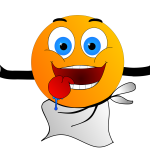Better Recovery for You with Better Chemistry by Joan Kent, PhD
Have you ever felt as if your legs weren’t recovered enough for the day’s workout? Do you ever look for quick ways to bring your legs back to their full power – ice, massage, cross-training, stretching – so you can train hard again?
This post is about glutamine and how it helps you recover.
Glutamine is an amino acid, one of the most abundant amino acids in the body. It’s released when muscles contract. A long, hard training can deplete glutamine by 25% or more.
And So What?
Well, glutamine is a fuel. It’s used not only by the muscles, but also by immune cells. The immune system manages recovery of all types: illness, injury, surgery, and athletic training.
Glutamine is also a fuel source for the cells lining the GI tract, which guards against the microorganisms that cause disease.
In addition, glutamine facilitates glycogen synthesis, which is key after training to permit faster and better recovery. For both health and recovery, glutamine needs to be replaced after workouts.
One obvious way to replace glutamine is with food. Glutamine is an amino acid, so many protein foods contain it. Examples of glutamine-containing proteins are beef, fish, chicken, pork, eggs, eggs whites, milk, yogurt, ricotta cheese, and cottage cheese.
Some vegetables contain glutamine: Brussels sprouts, carrots, celery, kale, parsley, spinach, cabbage, and others. Raw vegetables work better than cooked.
Glutamine is also found in fruits: apples, apricots, avocado, bananas, cantaloupe, dates, figs, grapefruit, oranges, papaya, peaches, pears, persimmon, pineapple, and strawberries.
The long fruit list does not contradict several articles I’ve posted in the past that recommend minimizing sugars, including fructose, the sugar in fruit. I suggest limiting the number of fruit servings to 1 or 2 per day and choosing your fruits from the list above to help with glutamine replacement.
Other foods that contain glutamine are beans, soy, peanuts and other legumes; wheat, barley, beetroot, corn, and nuts (small quantities).
If you’ve been training hard and feel that you’re not recovering fully – even with these foods in your diet – you might want to try a glutamine supplement. I’m most familiar with glutamine powder, although it’s also sold in tablet form.
If you use glutamine powder, try 1 heaping teaspoon (5 grams, the usual dosage) after training and again before bed. Mix the powder into an ounce of water and drink it, then drink a full glass of fresh water.
One of the benefits of taking glutamine before bed is that it can trigger a release of human growth hormone. HGH is a complex topic, but it has been shown to have immune benefits and aid in both cell and muscle recovery.
If you’d like more nutrition tips to enhance your workouts, visit LastResortNutrition and grab your free Boost My Workout consult. Discover how easy it is to recover better, recover faster, and train with more power with just a few easy shifts.
Brought to you by Dr. Joan Kent, best-selling author of Stronger than Sugar and The Sugar-Free Workout.



